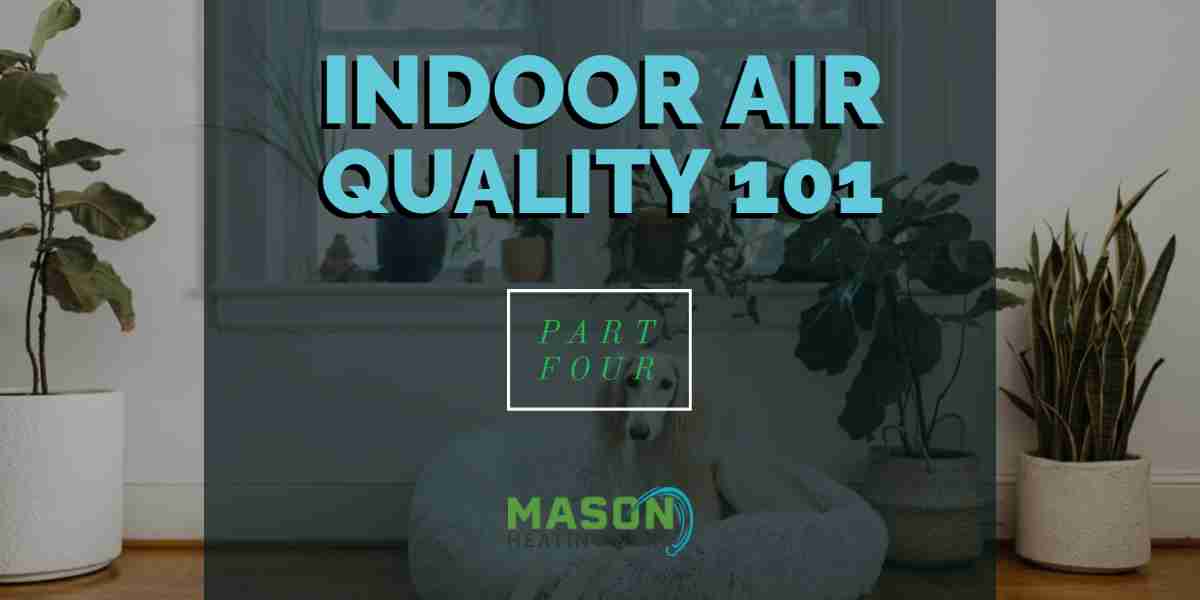We’ve covered a lot of information the past few weeks on the importance of Indoor Air Quality, the different types of indoor air pollution, and the different products and services we at Mason Heating & Air offer to help homeowners improve their air quality.
This week we are going to discuss some additional measures that homeowners can take on their own to improve indoor air quality.
Always Use Ventilation
Whether you’re in your kitchen cooking, or in your bathroom taking a shower, it’s important to utilize as much ventilation as possible when cooking, cleaning, showering, etc.
While the bathroom is the biggest source of moisture in the home, the kitchen is the source of all kinds of fumes from cooking, smoke, grease, carcinogens, not to mention cleaning supplies.
If for some reason there is smoke in the home, or aerosol spray, or any sort of fumes or particles, try to utilize whatever ventilation you have available to you, whatever that might be.
Sometimes, if necessary, this might even call for cracking open a window and using a fan.
Ventilation is key when it comes to indoor air quality.
Smart Dusting
Particles from mold, dust, dirt, pollen, and other particles wreak havoc on our indoor air quality. To get a handle on these, and eliminate as many as possible, we suggest something called “smart dusting.” What is “smart dusting?”
When you go about cleaning your home and dusting things that need dusting, you want to try to remove all of it instead of merely moving it around. To be effective at this, start your dusting with the things that are at the highest points in your residence. Dust off those areas first. Then, once they’re clean, work your way downward to the lower items last. Because the dust falls naturally downward, doing it this way will prevent the dust from landing in areas you might have already cleaned. This will help you remove the dust more effectively.
To make your dusting even “smarter,” however, experts suggest dampening a cloth instead of using a dry one, or a feather duster. Using a damp cloth traps the dust instead of just moving it from one area to another. Just be sure to rinse out the cloth periodically!
Using your damp cloth, you’ll start by targeting ceiling fans, blinds and curtains first, before going on to the lower items last.
Keep Pillows Clean, Use Pillow Covers
If you are like us, there’s nothing like returning home after a long day at work and getting in bed with your favorite pillow.
However, you aren’t the only one who loves that pillow. This might sound disgusting, but dust mites love pillows, too, and they can thrive in them. This nasty fact comes to light in research demonstrating how pillows and mattresses gain weight over time from the collection of the droppings and other waste products from these little critters. Once you realize this, you probably won’t look at your pillow the same way again.
And, you should understand now how washable pillowcase covers have their useful place in a home. With a pillowcase, you can still love your favorite pillow, but you can keep it clean by washing those pillowcases at least once every month. And, depending on the type of pillow you have, you can always wash it (or have it dry-cleaned) as well with the changing of each season.
Don’t Forget Mattresses and Beds
If you like the idea of using a cover for your pillow, you can take it one step further to use covers for your mattresses as well. This is another essential accessory for allergy sufferers. Mattresses, similar to pillows, are havens for dust mites. We also recommend cleaning headboards and bed frames often if they are encased with fabric as well.
Stop Stuff From Being Dragged Inside
As much as possible, if you’re trying to fight allergies, keep your windows closed to prevent pollen from getting inside. In addition to that, another smart strategy is to make everyone take off their shoes when coming inside. Establish an area for shoes outside or keep a mat near your entryways for everyone to clean off their feet. Otherwise, people coming in and out will continue dragging allergens indoors with them.
Keeping Things Cool Helps Curbs Humidity
Have you heard of anyone ever having to have their home treated for mold? If you have, you probably know how deadly mold can be in a home, how much it costs to treat for it, and how insidious it can be. A lot of times, homeowners aren’t even aware they have it for a while.
In any case, mold and mildew can wreak having on your breathing system. Health implications transcend the mere annoyances of allergies. One way to stop this is in maintaining cool indoor temperatures, which helps curb humidity. Mold and dust mites thrive in damp or even humid conditions. Often, a dehumidifier might even be in order.
Vacuum With HEPA Filter
When it comes to battling allergens, research clearly demonstrates that not all vacuum cleaners are equal: Some are better at stopping the spread of allergens indoors than others. As such, we suggest using a bagless vacuum cleaner outfitted with a HEPA filter. If you are changing your flooring, keep this in mind: Wood and other types of hard flooring can be dusted and mopped, making them much better than carpeting for anyone who suffers from any allergy problems.
Have a Professional Test Your Indoor Air Quality
Indoor Air Quality tests include essential tests for carbon dioxide, volatile organic compounds, and formaldehyde. Although some tests look for allergens, mold, and other particulates, others might look for radon or other gases that may be lurking in the home.
Tests like these are only available from professionals who are qualified to perform them. If you find a Do-It-Yourself test kit from a store, it is probably limited and you run the risk of it being inaccurate. If a professional discovers one or more indoor air quality issues, he or she can tell you how to resolve it.
USE SEASONAL MAINTENANCE TO HELP WITH ALLERGIES
Last but certainly not least, if you are trying to gain control over your allergy symptoms, routine seasonal maintenance will benefit you in a variety of ways.
Not only do we keep your system operating optimally, which has a direct impact on the quality of your indoor air, but we also identify any issues that might be brewing behind the scenes that might lead to future problems or even full-scale breakdowns.
We conduct a variety of cleaning procedures; we fine-tune your system with various checks and inspections; we also examine your air ducts and air filters and other areas.
When it comes to your home’s valuable AC unit or any HVAC system for that matter, it always pays off, in the end, to be proactive with your system than to be reactive ‒ especially for those who struggle with allergy symptoms.
LET US HELP YOU IMPROVE YOUR INDOOR AIR QUALITY
We at Mason Heating & Air care not only about your home comfort levels, but also about the health of you and your loved ones. Because indoor air quality has a major impact on your health and well being, we hope you find this information helpful. If you are interested in any of the products and services we offer, or if you’d like to know more, give us a call 513-496-2477 or Click Here to schedule an appointment now.
Indoor Air Quality 101: Part 1







